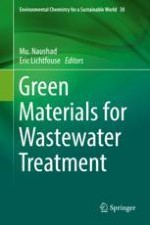2020 | OriginalPaper | Buchkapitel
10. Adsorptive Removal of Toxic Dyes Using Chitosan and Its Composites
verfasst von : Swati Verma, Raj Kumar Dutta
Erschienen in: Green Materials for Wastewater Treatment
Aktivieren Sie unsere intelligente Suche, um passende Fachinhalte oder Patente zu finden.
Wählen Sie Textabschnitte aus um mit Künstlicher Intelligenz passenden Patente zu finden. powered by
Markieren Sie Textabschnitte, um KI-gestützt weitere passende Inhalte zu finden. powered by
